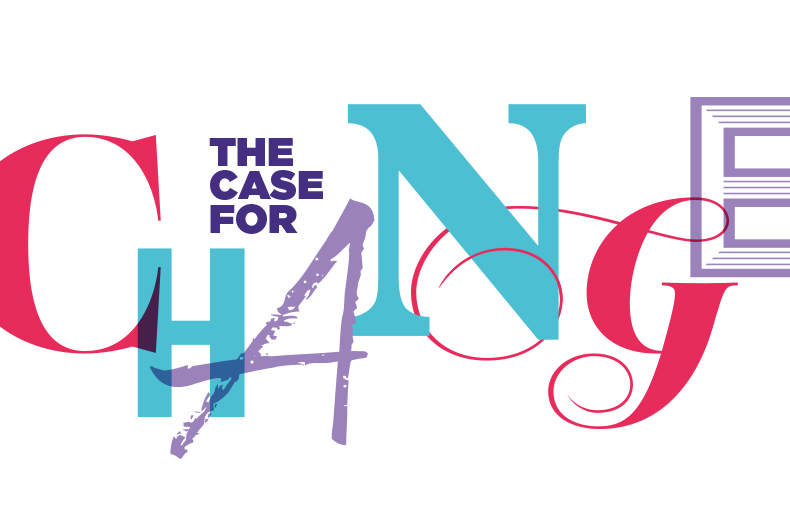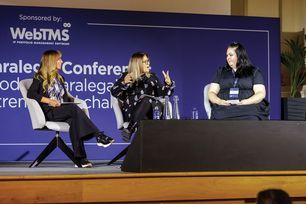The case for change
Geoff Steward reflects on why momentum is building to shake up the IPEC.

The past few months have seen discussion in the IP community about the Intellectual Property Enterprise Court (IPEC).
The questions at hand are: how is it currently operating and being used by brand owners and their legal teams? And is there a need for reform?
This article examines some of the key issues that have been raised in terms of the running of litigation in the IPEC, how these issues are being addressed and the prospects for change.
As the successor to the Patents County Court, the IPEC was established under its current guise in 2017.
Its stated aim was to provide a forum for streamlined IP litigation, for claims with a value not exceeding £500,000, and with a costs cap of £50,000 – meaning that a losing party will not be ordered to pay more than £50,000 in respect of the winning party’s costs.
This, in principle, makes the IPEC a relatively straightforward and cost‑effective forum for brand owners to use litigation as a means to protect their IP without breaking the bank.
Indeed, the IPEC Guide reminds users that: “The IPEC aims to provide a procedure for intellectual property litigation which is speedier and less costly than is the case in the rest of the High Court.
"It is also designed to safeguard parties from the risk of paying large sums in costs to the opposing party at the conclusion of the proceedings.”
Such a procedure is certainly needed in the world of IP. Action against infringers is most effective when brought in a timely and easily enforceable manner, and access to justice – without the eye‑watering price tag of big‑ticket High Court litigation – is critical in keeping smaller brands in business (and bigger brands within their legal spend budgets).
However, it has become increasingly apparent to many of us within IP litigation practices that certain behaviours of IPEC users are resulting in disproportionately high fees to litigants, with many cases being run in a way that makes them indistinguishable from High Court litigation.
Some of these behaviours have been highlighted in recent judgments by the IPEC judges. For example, failing to trim claims to put forward the key elements of a party’s case.
This was clearly an issue in the IPEC case of MEI Fields Designs Ltd v Saffron Cards and Gifts Ltd & Anor ([2018] EWHC 1332 (IPEC)), where the Judge, David Stone, noted that:
“The Defendants ran their case, by their counsel’s averment, like a stack of matryoshka dolls. Each defence contained another, which contained another. Pleading and disclosure issues were raised. Four contracts required interpretation.
"This all occupied court time, such that counsel had to cut themselves short in dealing with issues. Indeed, unusually for a copyright case, I was never actually taken to the allegedly infringing cards at issue in these proceedings.”
Similarly, in the recent IPEC case of Shazam Productions Ltd v Only Fools The Dining Experience Ltd & Ors (Rev1), ([2022] EWHC 1379 (IPEC)) the Claimant had put forward as part of a claim eight characters said to be protected by copyright, the analysis of two scripts identifying alleged copying plus an analysis of a recording of the allegedly infringing show and particulars of infringement.
In light of these vast materials, His Honour Judge Hacon had to make an order at the case management stage requiring the Claimant to select just one script or one recorded performance of the allegedly infringing works and to identify, in a schedule, 30 features alleged to have been copied from the Claimant’s works (and by reference to which the Court would determine whether or not there had been copying).
Some parties are pushing for permission to adduce multiple witnesses where one would suffice, for permission for expert advice on matters that are really for the judge to determine, and for as broad a scope of disclosure as the case management judge will allow.
All of these behaviours escalate the fees billed to the client to disproportionate levels.
In addition, because judges rarely have oversight of client fees (particularly where costs recovery is capped), these actions have been without consequence, so there is little incentive to do better and be more nimble.
Finally, some parties are engaging in extensive and largely unnecessary inter partes correspondence.
This is a classic tactic in High Court litigation – forcing the opponent to increase its own legal fees in order to engage with all aspects of the claim and the litigation procedure – and is entirely unsuitable for the IPEC.
Issues identified
Instances of these behaviours have not escaped the IPEC judiciary’s attention. Judge Nicolas Caddick QC noted in the recent case of Match Group LLC v Muzmatch Ltd ([2022] EWHC 941 (IPEC)) that: “Both sides assert that the case is simple or straightforward.
"Despite this and despite this being heard as a two‑day trial in the Intellectual Property Enterprise Court, there were 21 lever arch files of documents, 4 lever arch files of authorities and each side’s opening submissions ran to more than 70 pages.”
Overall, these practices make it much more difficult and much less predictable for brand owners to bring claims in the IPEC.
Despite the costs cap, the fees involved in running increasingly complex and cumbersome claims can make seeing litigation through to trial financially (or strategically) untenable.
IPEC action
In April 2022, CMS published its inaugural CMS IPEC Report, which focused on trends, decisions, data and updates from the IPEC.
The report acknowledged the high levels of irrecoverable fees in IPEC cases, the length of time it has been taking to get IPEC cases to trial and the fact that parties and the Court should be restricting the scope of disputes and actively managing cases to achieve significant savings in costs and time.
In a webinar that followed the report, the IPEC’s Presiding Judge, Hacon J, put out a call to the IP legal profession and to users of the IPEC to provide feedback on the IPEC.
He made it clear that he was concerned he was not always getting direct and unfiltered feedback from those on the ground.
In response to Hacon J’s request for feedback, Stobbs published an open letter to him setting out various ways in which we consider the IPEC is being used incorrectly (which turns on the concerns summarised above) and also suggesting a number of proposals for reform.
These proposals have the objective of making IPEC litigation more cost‑effective and streamlined. They include:
- Putting a page limit on statements of case.
- The IPEC judges conducting on‑paper evidence reviews of core disclosure, with simple disclosure to the IPEC by each law firm of amounts billed to date (as opposed to complicated costs budgeting), before directing whether any evidence of fact or expert evidence is needed.
- Determining case management issues on paper wherever possible, rather than at costly case management conferences (CMCs).
- A default assumption that witness evidence, if any, should be limited to two witnesses, with a page limit.
- Allowing expert reports only in exceptional cases where the goods/services at issue are sufficiently technical that the court requires assistance.
The response we have since received from Hacon J, shortly before the copy deadline for this article, is that across the legal profession he has not found any commonly held view that a particular aspect of the IPEC multitrack needs to change; and that the IPEC remains a popular forum.
He has indicated that he does not consider any form of costs budgeting in the IPEC would work as it would increase cost. He has said that he considers that the scope for wealthy litigants to play the system to bring unfair pressure on the less well funded is much more limited in the IPEC than in the High Court, with cost caps and stronger case management.
He has also indicated that overall there is a desire to maintain oral CMCs and that this aids controlling the issues, disclosure, evidence etc.
This may not be the end of the discussion though.
The momentum in the ongoing conversation about IPEC reform is highlighted by the topic being put up for debate at an upcoming meeting of CITMA’s Law and Practice Committee, as well as at the July meeting of the BBG Legal Group.
Moving forward
Any misuse of the IPEC ultimately denies brand owners (both small and large) the opportunity to protect one of their most valuable assets in the very place that was specifically set up to make it easier to do so.
In our experience, the real problem is not the IPEC and its case management powers, but the way in which some barristers and solicitors overly complicate cases in the IPEC.
We would urge those using the IPEC to bear in mind that it is intended to be a streamlined and cost‑effective forum for IP litigation for brand owners of all shapes and size, not simply a different forum in which to deploy their old tricks.
The recent engagement of the judiciary in this debate will hopefully mean that the IPEC judges are more alive than ever to such tactics.
Geoff Steward is an IA Director and Head of Litigation at Stobbs
Emma Dixon, IA Manager at Stobbs, co-authored
Full issue





